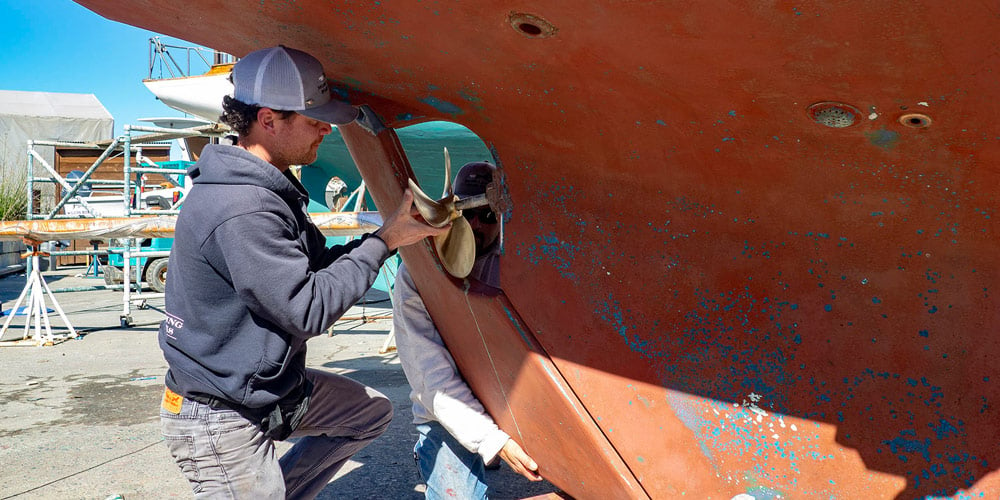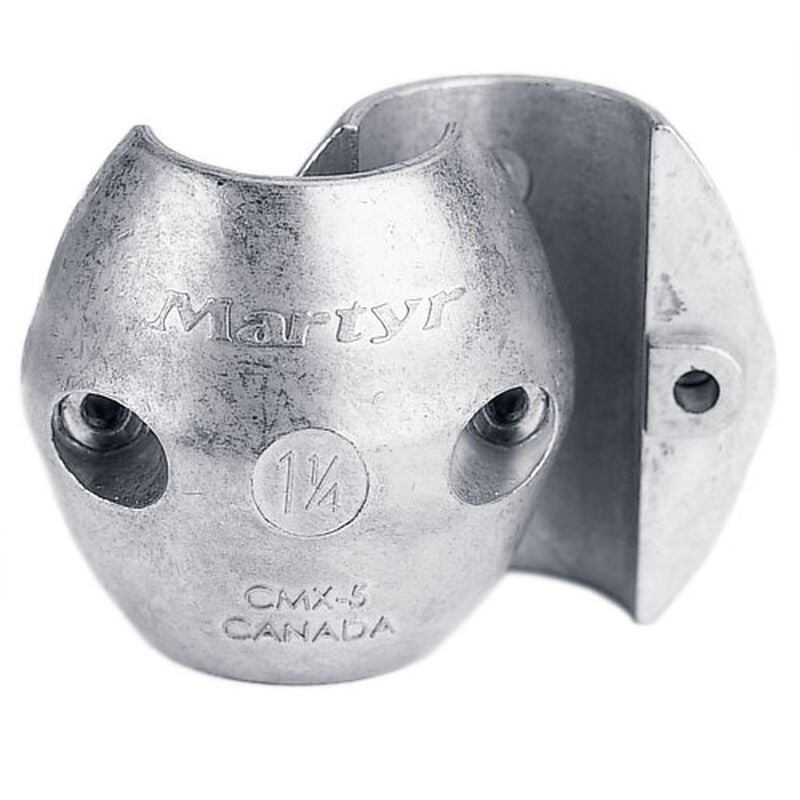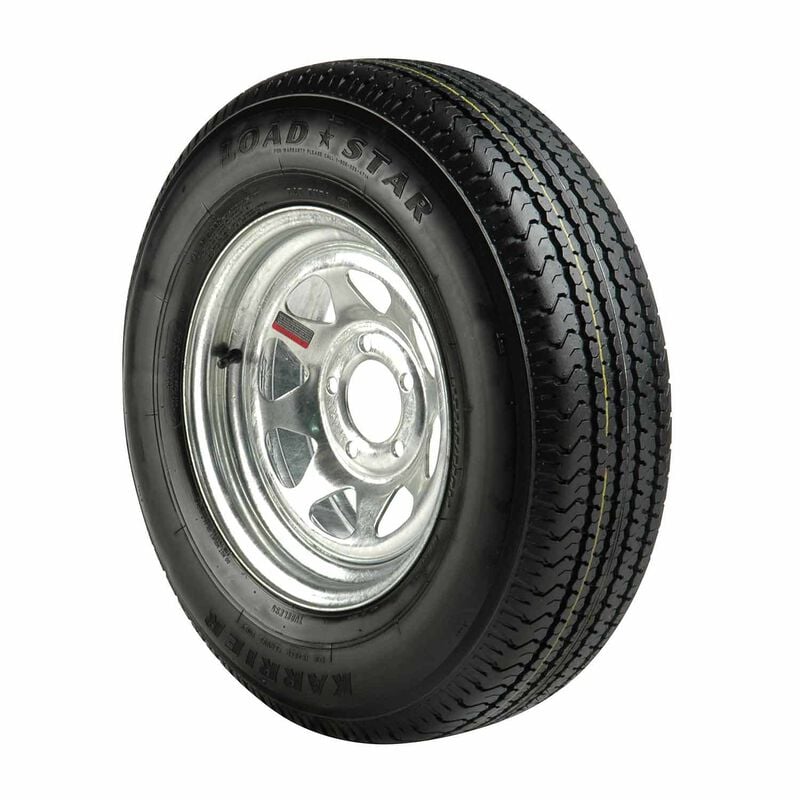
Make sure your first launch in spring is trouble free with this spring maintenance checklist. We'll walk you through common task depending on what type of boat you have and where you store it.
- Getting Started Checklist
- Boats Ashore
- Outdrives and Outboards
- Engines and Related Systems
- Sailboat Rigging
- Trailers
- Product List
Getting Started

You should regularly inspect your safety gear and do a detailed inspection at the start of season. If your inflatable PFD indicator is red, you need to rearm it with a PFD rearming kit like the one above.
- If necessary, reinstall batteries. Top up lead acid batteries with distilled water. Fully charge batteries. Clean, tighten electrical connections, especially terminals of battery cables. Coat battery terminals with insulating film of grease, or apply protective battery terminal spray.
- Open and close seacocks; handles should move freely. Hoses should be double-clamped with stainless-steel hose clamps. Replace any that look rusted.
- Inspect the raw-water intake strainer to be sure it has not cracked, and is clean and free of corrosion. Make sure the strainer’s top fits snugly.
- Check running lights. Clean/tighten connections or replace bulbs to assure that all are operating properly.
- Check VHF and GPS antenna connections by disconnecting and spraying with moisture-displacing lubricant, then reconnect and test.
- Look for indications of leaking at trim cylinders and hoses as well as at hydraulic steering pumps and rams. Replace the O-ring or gasket if leaking.
- Make sure the stuffing box or shaft seal is completely dry when the boat is at the dock.
- Inspect portlights, hatches, and deck fittings for dirty or displaced caulking, water trails, dirt, and green corrosion, any of which signals a leak that needs to be recaulked.
- Test bilge pump and high-water switches and alarms.
- Test smoke and carbon monoxide alarms, LPG and gasoline fume detector.
- Check flares (expiration date) and fire extinguishers (charge), and replace/recharge as necessary.
- Check and service safety gear such as life jackets, and MOB gear.
Boats Ashore

Inspect all anodes on your boat and replace any that are close to half-deteriorated.
- Inspect props for dinging, pitting, and distortion. Make sure cotter pins are secure. Grip the prop and try moving the shaft — if it’s loose, the cutlass bearing may need to be replaced.
- Replace plastic fittings near the waterline with bronze or Marelon.
- Inspect the anodes on the shaft, outdrive, and trim tabs. Replace any that are close to half-deteriorated.
- Check to make sure the rudderstock hasn’t been bent.
- After the boat is launched, be sure to inspect around the rudder and all thru-hulls for leaks, and check the stuffing box while underway to make sure there is a steady drip.
Outdrives and Outboards
- Inspect rubber outdrive bellows for cracked, dried, and/or deteriorated spots (look in the folds). Replace suspect bellows.
- Replace deteriorated outdrive zincs.
- Check hydraulic trim fluid. If you didn’t change it last fall, change it now.
- Check lower-unit lube level. Creamy oil indicates water (and a bad seal). Many manufacturers recommend changing the oil every year.
Engines and Related Systems
- Flexible gasoline lines should say “USCG Approved, J1527.” Replace any that don’t.
- Are fuel hoses supple, with no cracks, bulges, or soft spots? Do the lines smell like gasoline (wipe the lines with a clean rag and then smell the rag)? Did you also use a rag to detect odors at connections?
- Cooling hoses should fit snugly and be solidly clamped.
- Replace any hose clamps that show signs of corrosion.
- Replace fuel filters.
- Clean or replace the air filter.
- Change engine oil unless done in the fall (preferable). Check fluid levels: transmission, hydraulic steering fluid, and coolant.
- Check belts for tension and wear.
- Check raw-water and freshwater pumps for seepage, which indicates a gasket needs to be replaced.
- Replace raw-water impellers if they are more than a year old.
- Examine exhaust manifolds for signs of corrosion and water seepage that indicate blockage. If you suspect a problem, remove the manifold.
- Replacing the (inexpensive) gaskets at the heat exchanger every year helps prevent corrosion at the housing and also lets you look for gunk that can clog the stacks.
- Test bilge blower and inspect hose.
- Inspect outer jacket of cables for cracks and swelling, either of which indicates the cable must be replaced. Use waterproof grease at the ends.
- Oil every year.
Sailboat Rigging
- Inspect swage fittings for rust and cracks. Running rigging should be supple and free of chafe.
- Run a rag over stays and shrouds to find “fishhooks” that indicate the wire needs to be replaced.
- Ensure that spreaders bisect the shrouds. Ends should be protected to prevent chafe.
- Remove tape at turnbuckles and lubricate threads (preferably with Teflon).
- Run a water hose over chainplates to check for leaks. Look for rust streaks inside and out. If necessary, remove them and recaulk.
Trailers

Inspect your trailer tires at the start of season and replace them if the sidewalls or cracked or the tread is worn down.
- Inspect tire treads and sidewalls. Cracks on sidewalls, or lack of tread, indicates the tire may be replaced. Use a gauge to check pressure. Don't forget the trailer's spare tire.
- Sand and paint rusted areas.
- Inspect bearings. Repack as necessary.
- Test tail and back-up lights. Replace burned-out bulbs and chafed wires. Corroded terminals should be cleaned. Make sure the white ground wire is securely attached to the trailer's frame.
- Test the winch, manual or electric to ensure it's working properly.